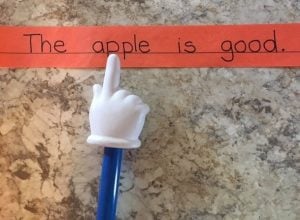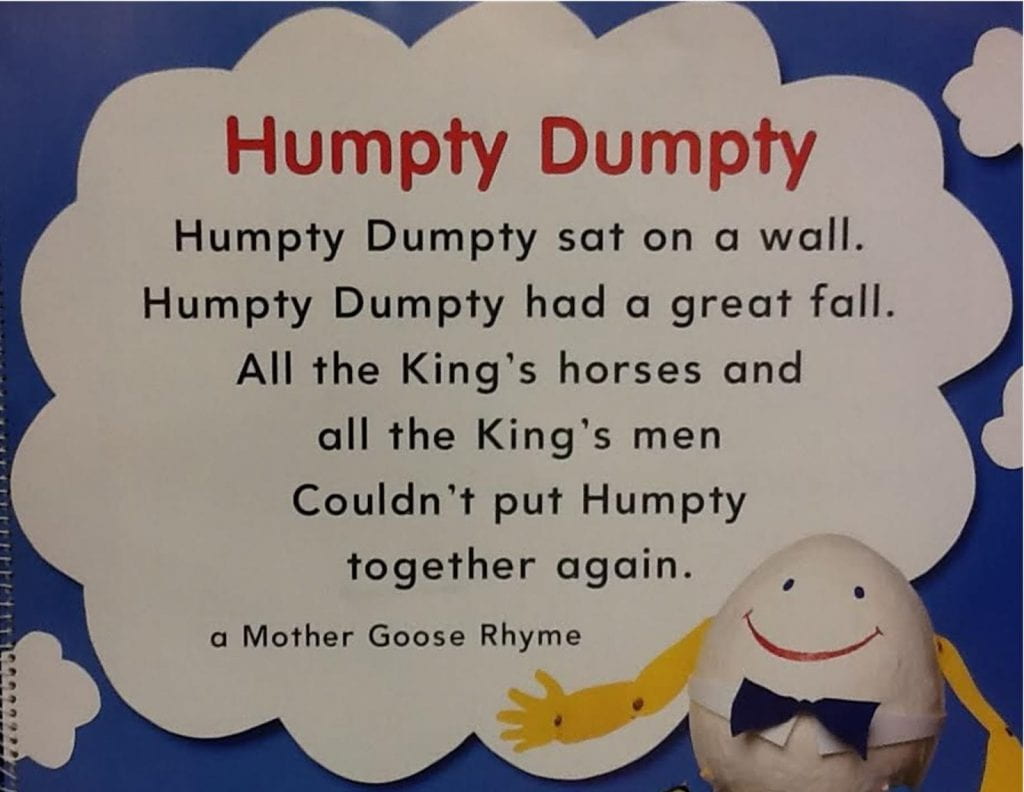by C. Elkins, OK Math and Reading Lady![]()
Daily explicit routines regarding phonological awareness and phonics are important, especially for KG-2nd grade levels (and beyond for those who are in need of extra intervention). Whether you are utilizing the textbook’s recommended lesson plan or seeking out on your own, I’d like to advocate for a daily routine to teach and/or practice these skills. In this post, I will focus mostly on teaching early phonological awareness routines and how they are connected to later reading, spelling, and writing success.
Phonological Awareness encompasses pre-reading skills associated with the sounds of language. If you have assessed this at the PreK-2nd grade levels, you know part of the assessment involves identifying spoken words, rhymes, syllables, onsets/rimes, and identifying, segmenting, blending, and substituting phonemes. Phonemic awareness is under the umbrella of phonological awareness with more of a focus on the latter part (onsets/rimes, and identifying, segmenting, blending, and manipulating phonemes). All of this, regardless, is based on SOUNDS only. This awareness is AUDITORY and not print related.
My opinion regarding this daily routine, is for a whole class explicit 10-15 minute lesson. During the whole class daily routine, keep mental tabs or quick notes on who has difficulty so you can follow up during small group and learning station opportunities throughout the week. Try video taping your routine for those “extra eyes.” See a link to some FREE research-based activities at the end of this post.
Spoken Words:
I have observed frequently that young students do not always know the difference between letters, words, and sentences. I usually discover this via writing lessons. Wonder why students don’t space between words? Or spread letters within a word far apart? I think it may go back to a misunderstanding about this very basic phonological awareness concept.
The assessment for this involves the teacher stating a sentence and the child pushes chips or pennies to indicate how many words were heard. Usually this isn’t too difficult until the teacher utters a 2-syllable word. Does the child understand this to be one or two words?
Believe it or not, this is a huge key concept later when the child is reading text. You may discover errors with 1-to-1 correspondence. When reading this sentence: “The apple is good.” does the child keep their finger on apple until the word is finished, or do they move their finger for each syllable? And then, as mentioned previously, it also becomes a hindrance when writing.
As you can see then, concept of spoken word is closely tied to the understanding of syllables. The number of syllables per word is determined by the number of vowel sounds heard. Friend = 1 syllable. Funny = 2 syllables. There are several ways to count them:
- Clap or snap each syllable

- Count with fingers
- Feel the jaw move
Why is knowledge about hearing syllables important to later reading skills?
- Breaking apart words by syllables is an important reading strategy. Can the child visually see the syllable and then pronounce each part as if it was a little word (example: yes-ter-day).
- Breaking apart words by syllables is an important spelling and writing strategy. Hearing the sounds of the word is just as important as the visual aspects of the word. Trying to spell the word important? Can I hear the parts /im/ + /por/ + /tant/? If I can hear them, I can come closer to spelling them.
Daily teaching routine for Spoken Word and Syllables:
- Present a sentence orally. Step 1: Students repeat the sentence. Step 2: Have them do one of the following to indicate # of spoken words: clap, stomp, use magnetic chips on a the board, unifix cubes, count with fingers, or select a # of students to match the # of words and they each stand to say one of the words in the sentence – they become the sentence.
- State a word and have students clap, snap, or count # of syllables.
- Hand out picture cards and have students group together by # of syllables.
Rhyme:
Knowledge of rhyme is one of biggest predictors of reading success, but this seems to be difficult for many students I have encountered. Maybe students aren’t hearing nursery rhymes at home. With assessments, students are usually asked to do the following: recognize if two given words rhyme (yes or no); or, produce a rhyme (even if the word produced is not a real word).
When students have difficulty with rhyme, this means they are unable to hear the similarity in ending sounds. Or the child cannot separate the onset from the rime. This definitely can cause future problems with spelling (Know how to spell like? Then try to spell bike.)
Daily teaching routine for Rhyme:
- Exposure to simple, fun poems and songs on a daily basis.
- Collaboration with your school’s music teacher.
- Teach rhyme in conjunction with onset and rime. Why? Because to determine if words rhyme, you must first be able separate the onset from the rime. What about the rhymes friend and send? If I can separate the onset from the rime, I have /fr/ + /end/ and /s/ + /end/. What about these two non-rhymes: pool and pill? Find the onsets and rimes: /p/ + /ool/ and /p/ + /ill/.
- Teacher gives two words (orally). Students decide if they rhyme with various possible actions: thumbs up/down; stand up/ sit down; face the front / face the back; etc. Be sure to follow through to explain why they rhyme or do not rhyme. “Yes, time rhymes with lime because they both say /ime/. Can you name another word with the /ime/ sound?” Try asking, “How do you know they rhyme?”
- Show a picture or object to the class. Ask students to name words that rhyme. Be sure to again, acknowledge why they are correct or incorrect. “Yes, hat rhymes with cat because they both end with the /at/ sound.” or “No, cut does not rhyme. /k/ + /ut/. We need /at/ to make it rhyme.” Accept nonsense words.
- Make up or read a couplet and leave off the end to the second line. Get students to complete it. “Humpty Dumpty sat on a wall, Humpty Dumpty had a great ____.” or “In the morning I will bake, a big delicious chocolate ____.”

Here’s a great FREE resource from the Florida Center for Reading Research. The link here is for KG activities regarding phonological awareness. Lots of ideas, picture cards, etc.: Phonological Awareness Activities (fcrr.org)
What are your favorite phonological awareness teaching routines?
Stay tuned — Next post: Phonemic Awareness routines
I am new to primary so these ideas will help my students who struggle to read and spell.
Thanks! Stay tuned for more posts dealing with primary reading!
This will be very helpful for me. Thank you.
It was nice to meet you. I look forward to working with you.